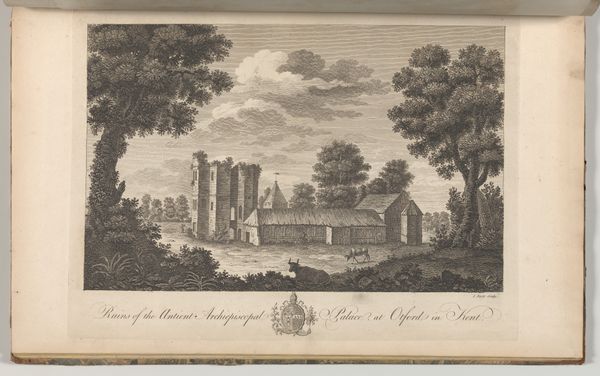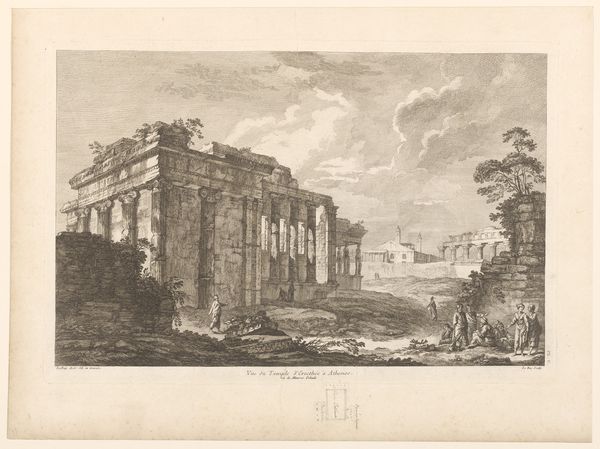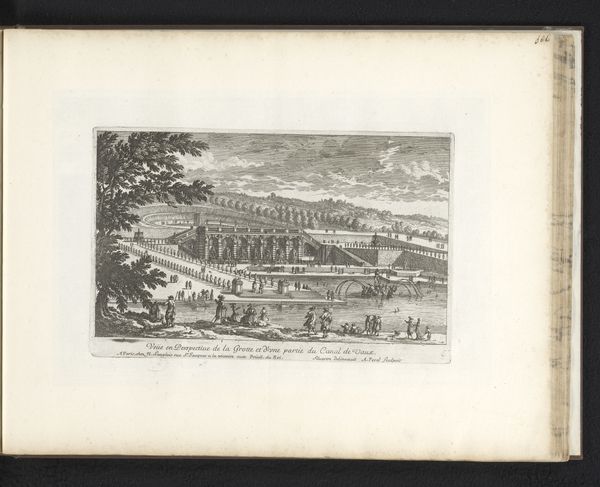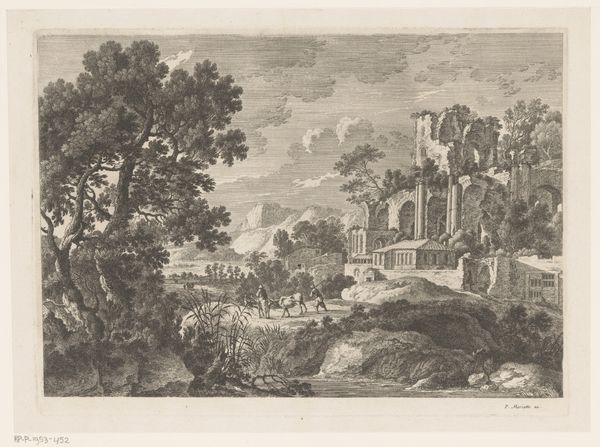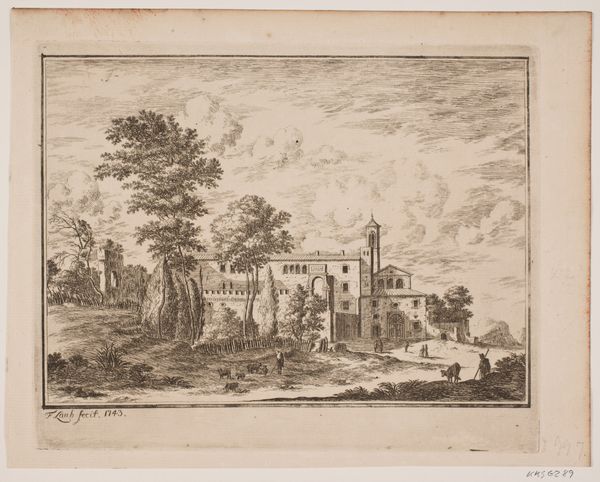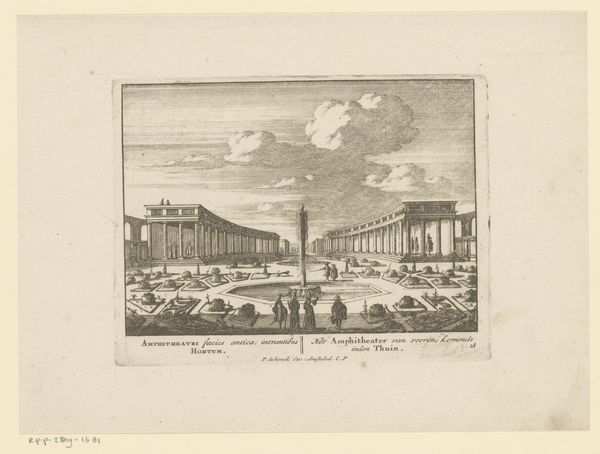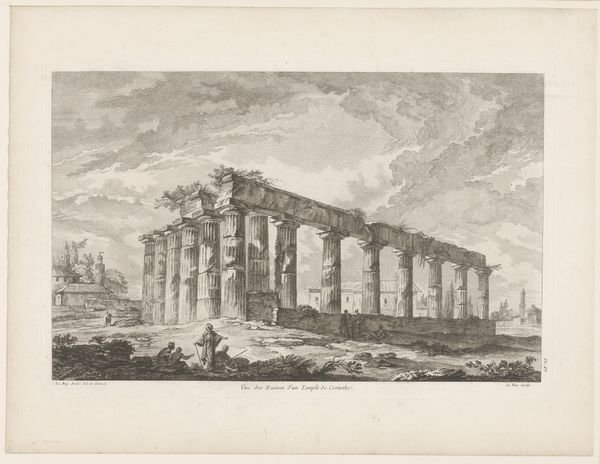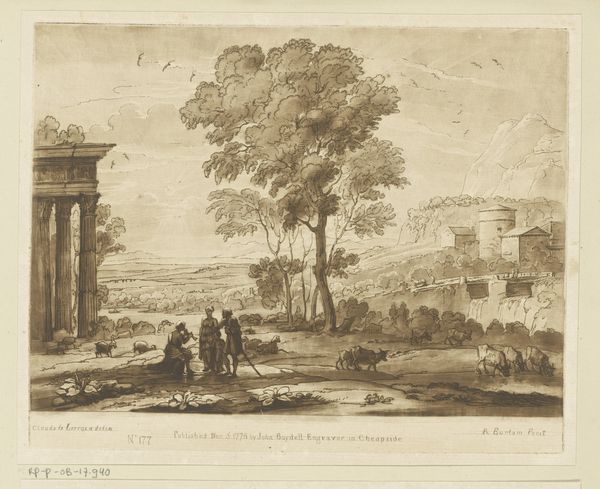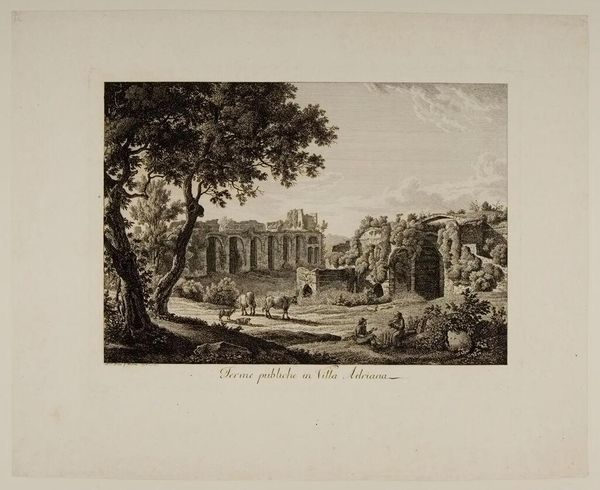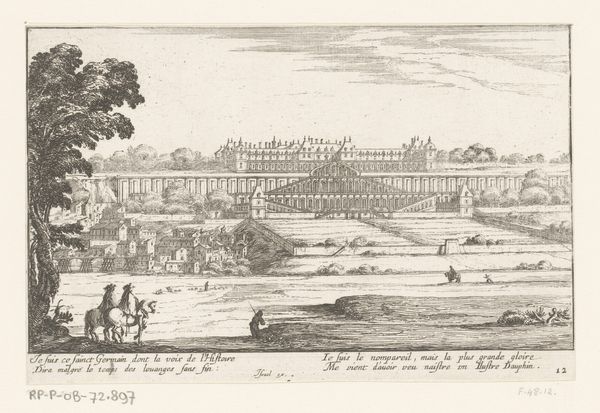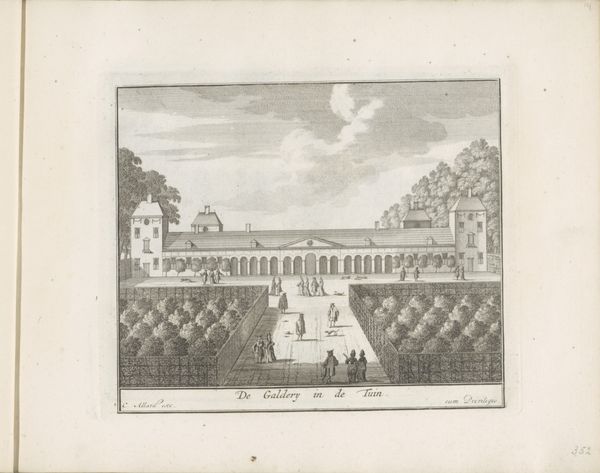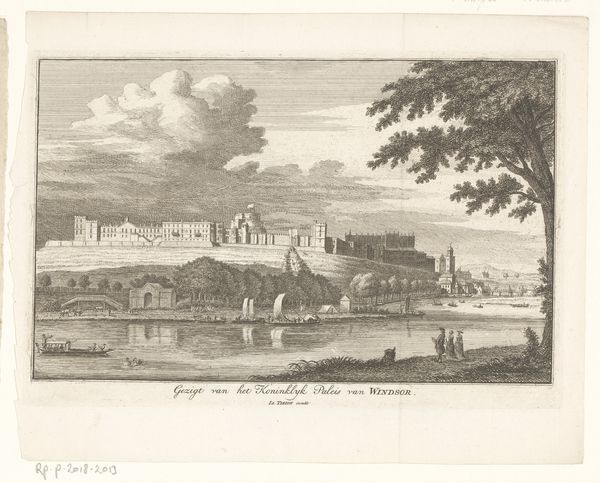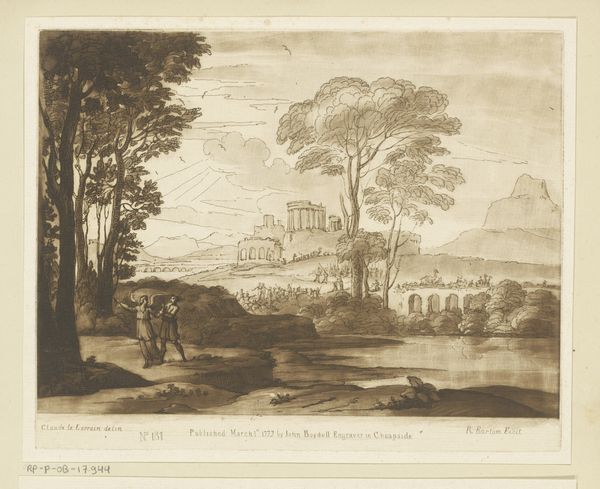
aquatint, drawing, print, paper, ink, engraving, architecture
#
aquatint
#
drawing
#
neoclacissism
# print
#
landscape
#
classical-realism
#
paper
#
ink
#
engraving
#
architecture
Dimensions: height 274 mm, width 390 mm
Copyright: Rijks Museum: Open Domain
"Aquaduct van keizer Justinianus" is a lithograph made by Paulus Lauters in the 19th century. It pictures the Valens Aqueduct in Istanbul, initially built by the Romans and later expanded by the Byzantines. Lauters, living in a time of burgeoning empires and colonial expansion, presents us with more than just a landscape; he offers a view of power, engineering, and history. What stories does the aqueduct tell? Built by Roman hands, expanded by Byzantine ambition, now captured by a 19th-century gaze, the aqueduct silently carries narratives of shifting empires and cultural identities. Note the figures in the foreground; their presence invites us to reflect on how we, too, are inheritors and interpreters of these layered histories. The aqueduct stands as a reminder that the past is always present, shaping our landscapes and our identities.
Comments
No comments
Be the first to comment and join the conversation on the ultimate creative platform.
